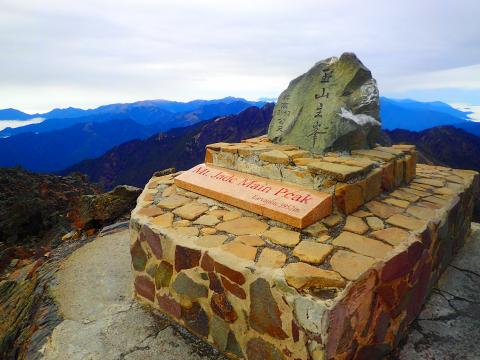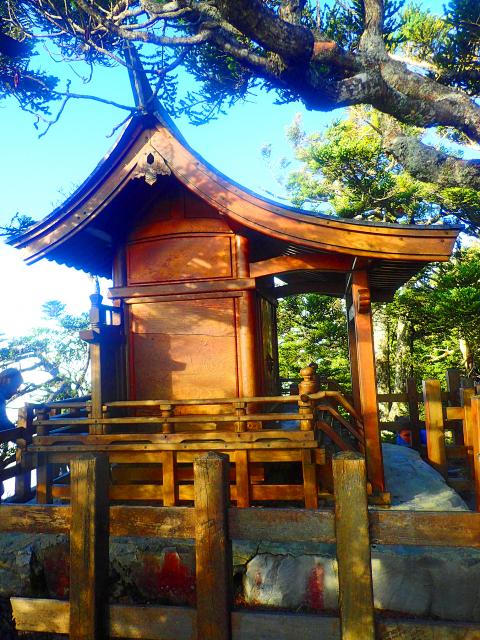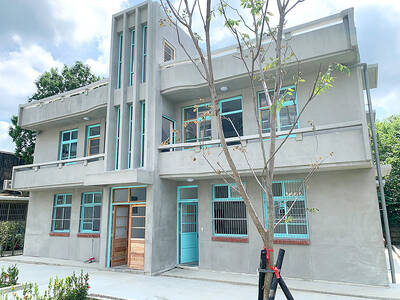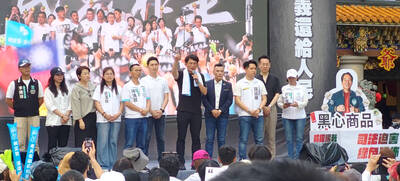At first it might seem rather odd that the highest mountain in Taiwan (and by some definitions the highest in East Asia too) is in fact also one of the easiest to climb. However, perhaps it’s not so remarkable; as one of the “big three” popular trekking summits in eastern Asia (along with Japan’s Mount Fuji and Mount Kinabalu in Malaysian Borneo), Yushan’s main peak (3,952 meters) attracts increasingly huge numbers of local and foreign trekker-tourists, so it’s well worth some time and effort on the part of the authorities to create a safe, good quality trail. The two-day Tatajia (塔塔加) ascent (by far the more popular of the two main routes to the summit) is a remarkably well-engineered route, and it’s a thrilling surprise to many first-timers to find the trail somehow skirts all the mountain’s treacherous cliffs and deposits them on top of Taiwan with remarkable ease.
LEAVING LATER
While climbing Yushan is within the capacity of any fairly fit person, getting the necessary permission to climb is notoriously tricky, since permits (of which only 100 or so are issued each day) are snapped up in a flash, especially on weekends. For the best chance of success, either join a trip run by a well-established mountain hiking outfit (there are a few English-speaking ones out there), or simply avoid the weekends and climb during the week, when permits are a good deal easier to get, especially for foreign passport holders, for whom a quota is reserved each day from Sunday to Friday.

Photo: Richard Saunders
With only 100 or so people on the upper slopes of the mountain at any one time, it’s reasonable to assume that hiking up there would be a peaceful experience. But since on the second day almost everyone starts the final hike to the summit from Paiyun Lodge (排雲山莊) at about the same time (around 3am) to get to the summit in time for dawn, there’s usually a bit of a traffic jam on the way up, with people jostling for the same photo next to the marker stone at the summit. An effective way to avoid the crowds at the summit is simply to get up later and join the small number of sensible souls who climb the final 2.5km from Paiyun Lodge to the summit as everyone else is descending. Unfortunately, you’ll still almost certainly be up with everyone else at 2am or so (the thin walls of the 12-bed dorms do nothing to muffle the voices and footsteps of 100 excited trekkers), but it’s worth hanging on an extra hour or two before setting off to enjoy the summit in peace.
LESS-VISITED PEAKS
A second way to enjoy Yushan in relative seclusion is to add one of the mountain’s other peaks to your route: another four summits lie close enough to the main peak to be considered as add-ons during the usual two-day trek. Be sure to specify which other peaks you intend to climb when you apply for the permit. The second most popular Yushan summit is the North Peak (玉山北峰, 3,858 meters), an exciting 2km scramble beyond the main peak, first down the loose screes of the Fengkou (風口) immediately below the summit crag, then along the slim line of the ridge to the peak. On a clear day, the summit of the North Peak offers perhaps the finest view on the whole mountain, including the classic cockscomb silhouette of Yushan familiar from many photos, the back of the NT$1,000 bill, and even the logo of a local bank.

Photo: Richard Saunders
Standing on the summit of Yushan, the north peak is easily made out by the weather station building on its top. Rather closer, the East Peak (玉山東峰, 3,869 meters) appears to be just a short walk away, and it is (the return trip is less than two hours), but it’s a very steep and rocky scramble, and shouldn’t be attempted in poor weather.
For the average two-day hiker, the easiest add-on to an Yushan trek is one of the two peaks that lie off the trail between Tatajia and Paiyun Lodge (you could, of course do both, if you’re feeling really full of beans). Near the 2.5km marker, the short, but very steep, scramble up to Yushan Front Peak (玉山前峰, 3,239 meters) is best left to hikers aiming to bag all “top 100 peaks of Taiwan.” The climb up (and especially the scramble back down) is exhausting if taken too quickly, the views from the tiny summit are poor in comparison to the other peaks, and afterwards there’s still an uphill walk of nearly 6km to reach Paiyun Lodge.
Much more worthwhile (especially if the weather is clear) is the 2km detour to Yushan West Peak (玉山西峰, 3,518 meters); the trailhead is right next to Paiyun Lodge. Apart from a few rocky pitches near the beginning, the trail is fairly simple and largely level until the final steep but short climb to the peak. The summit itself is wooded and forgettable, but a couple of minutes beyond it is a beautiful reconstructed Japanese Shinto shrine. Best of all, shortly before the climb to the peak, the trail crosses a grassy meadow, which in good weather commands one of the very best views of Yushan’s craggy summit peak, towering across the way.

Photo: Richard Saunders
Richard Saunders is a classical pianist and writer who has lived in Taiwan since 1993. He’s the founder of a local hiking group, Taipei Hikers, and is the author of six books about Taiwan, including Taiwan 101 and Taipei Escapes. Visit his Web site at www.taiwanoffthebeatentrack.com.

Photo: Richard Saunders

June 2 to June 8 Taiwan’s woodcutters believe that if they see even one speck of red in their cooked rice, no matter how small, an accident is going to happen. Peng Chin-tian (彭錦田) swears that this has proven to be true at every stop during his decades-long career in the logging industry. Along with mining, timber harvesting was once considered the most dangerous profession in Taiwan. Not only were mishaps common during all stages of processing, it was difficult to transport the injured to get medical treatment. Many died during the arduous journey. Peng recounts some of his accidents in

“Why does Taiwan identity decline?”a group of researchers lead by University of Nevada political scientist Austin Wang (王宏恩) asked in a recent paper. After all, it is not difficult to explain the rise in Taiwanese identity after the early 1990s. But no model predicted its decline during the 2016-2018 period, they say. After testing various alternative explanations, Wang et al argue that the fall-off in Taiwanese identity during that period is related to voter hedging based on the performance of the Democratic Progressive Party (DPP). Since the DPP is perceived as the guardian of Taiwan identity, when it performs well,

The Taiwan People’s Party (TPP) on May 18 held a rally in Taichung to mark the anniversary of President William Lai’s (賴清德) inauguration on May 20. The title of the rally could be loosely translated to “May 18 recall fraudulent goods” (518退貨ㄌㄨㄚˋ!). Unlike in English, where the terms are the same, “recall” (退貨) in this context refers to product recalls due to damaged, defective or fraudulent merchandise, not the political recalls (罷免) currently dominating the headlines. I attended the rally to determine if the impression was correct that the TPP under party Chairman Huang Kuo-Chang (黃國昌) had little of a

At Computex 2025, Nvidia CEO Jensen Huang (黃仁勳) urged the government to subsidize AI. “All schools in Taiwan must integrate AI into their curricula,” he declared. A few months earlier, he said, “If I were a student today, I’d immediately start using tools like ChatGPT, Gemini Pro and Grok to learn, write and accelerate my thinking.” Huang sees the AI-bullet train leaving the station. And as one of its drivers, he’s worried about youth not getting on board — bad for their careers, and bad for his workforce. As a semiconductor supply-chain powerhouse and AI hub wannabe, Taiwan is seeing